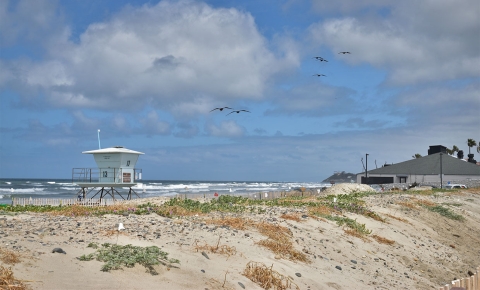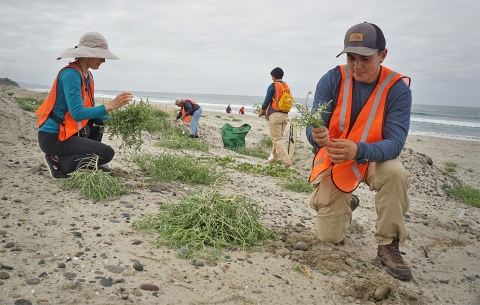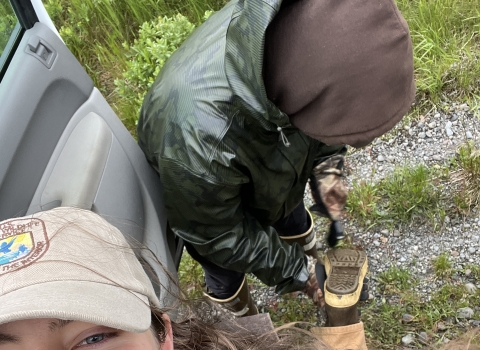The locals in Encinitas, California know Cardiff Beach as a great spot for recreation, relaxation and a spectacular view of the ocean.
What they may not know, though, is that all of that beauty and serenity has been under constant threat of chaotic wave action, high tides and erosion from the Pacific Ocean, according to former Coastal Program manager Katherine Weldon.
“These tidal impacts have long been an issue for Cardiff State Beach even before Encinitas became a city. We have records of ocean water flooding Highway 101 at least 42 times since the ‘80s,” she said.
Fortunately, Weldon came across Larry Giles, a City of Encinitas lifeguard captain, who shared his knowledge of previously existing sand dunes. Weldon researched old photographs of Cardiff State Beach and found that naturally made sand dunes and cobble berm once dominated the area before development took over. The discovery became a catalyst for a living shoreline project—a technique using plants and other natural elements to enhance coastal resilience.
The City of Encinitas, California State Coastal Conservancy, California Department of Parks and Recreation, Nature Collective and the U.S. Fish and Wildlife Service then formed a partnership to recreate sand dunes along Cardiff State Beach.
“Construction includes rip rap and cobblestone buried underneath a pile of sand that is collected from San Elijo Lagoon to reduce erosion and protect against sea level rise,” said Carolyn Lieberman, U.S. Fish and Wildlife Service Coastal Program coordinator. “The reinforced sand dunes are vegetated with native coastal plants, such as sand verbena and Nuttall’s acmispon, providing habitat for wildlife, including the federally threatened Western snowy plover and endangered California least tern. The project also provides improved public access points and other pathways that separate joggers from cyclists.”
The Cardiff State Beach Living Shoreline Project was funded for $3.8 million, with the Service’s Coastal Program contributing $40,000. The project is one of a number of living shoreline projects internationally that provide resiliency in the face of sea level rise and protect infrastructure that is under threat.
“The project is a step in the right direction to do larger-scale living shorelines along the coast,” said Evyan Borgnis Sloan, State Coastal Conservancy project manager (for the South Coast).
Cardiff State Beach will be monitored for at least five years to evaluate whether the project is meeting pre-defined success criteria. The monitoring will look at vegetation cover, durability of the dunes over time and other factors to inform other coastal cities of the viability of this type of dune system for coastal protection.
Signage will be posted throughout the constructed site to educate the public on sand dunes and native wildlife.









